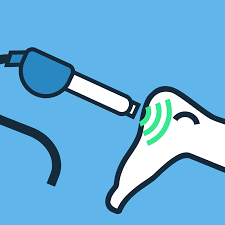Should I Stretch Before or After Exercise?
The debate over whether to stretch before or after exercise has evolved over time, and current

recommendations emphasize a dynamic approach before exercise and static stretching after exercise.
Here’s a breakdown of the two types of stretching and when they are typically recommended:
1. Dynamic Stretching (Before Exercise):
Definition:
- Dynamic stretching involves active movements that take a joint or a muscle through its full range of motion. These stretches are typically done in a controlled and deliberate manner.
Purpose:
- The primary goal of dynamic stretching before exercise is to warm up the body, increase blood flow to the muscles, and enhance flexibility and mobility. It helps prepare your muscles and joints for the specific movements involved in your workout.
Examples:
- Leg swings, arm circles, high knees, walking lunges, and hip circles are examples of dynamic stretches.
When to Do:
- Dynamic stretching is best performed as part of your warm-up routine before engaging in more intense physical activity.
2. Static Stretching (After Exercise):
Definition:
- Static stretching involves holding a stretch for an extended period, usually 15-60 seconds. It allows a muscle or group of muscles to lengthen gradually.
Purpose:
- The primary goal of static stretching after exercise is to improve flexibility, maintain or increase range of motion, and aid in the cool-down process. It can help relax the muscles and prevent stiffness.
Examples:
- Hamstring stretch, calf stretch, quadriceps stretch, and shoulder stretch are examples of static stretches.
When to Do:
- Static stretching is most effective when performed after your workout when your muscles are warm. It is not typically recommended as part of the pre-exercise warm-up, especially if the goal is to enhance performance.
Additional Considerations:
1. Dynamic Stretching Modifications:
- Tailor dynamic stretches to the specific activities you will be doing during your workout. For example, if you are preparing for a run, include dynamic stretches that mimic running movements.
2. Individual Variation:
- Individual preferences and responses to stretching can vary. Some people may benefit from a combination of dynamic and static stretching before and after exercise.
3. Injury Prevention:
- While stretching can help improve flexibility and reduce the risk of injury, it is not a guarantee. Other factors such as proper warm-up, technique, and conditioning also play crucial roles in injury prevention.
4. Listen to Your Body:
- Pay attention to how your body responds to stretching. If a particular stretch causes pain (not to be confused with discomfort), it’s important to modify or skip that stretch.
In summary, consider incorporating dynamic stretching into your warm-up routine before exercise to prepare your body for movement. Save static stretching for the post-exercise cool-down to help with flexibility and relaxation. As with any aspect of your fitness routine, it’s a good idea to consult with a fitness professional or healthcare provider, especially if you have any specific health concerns or conditions.














































